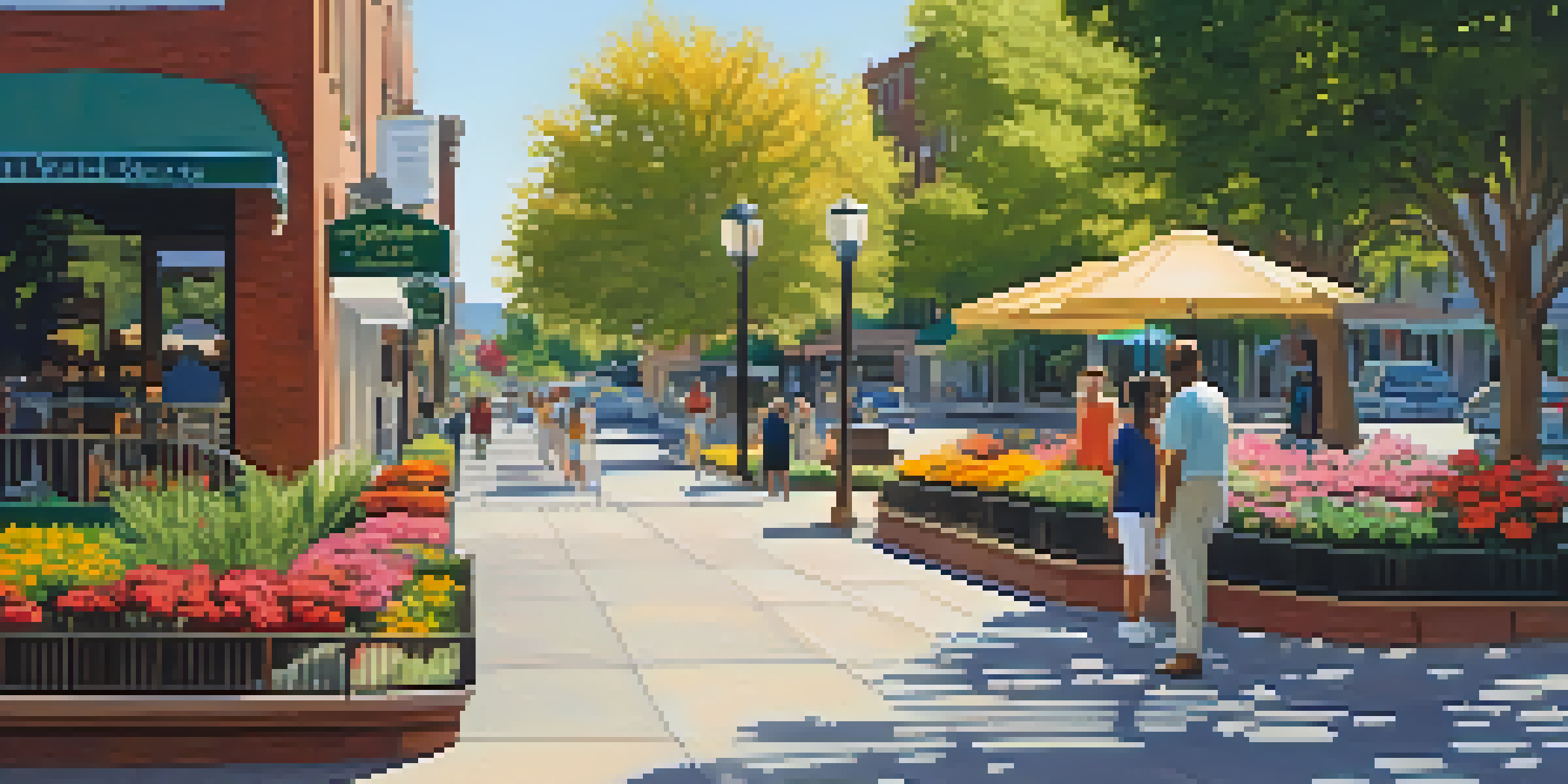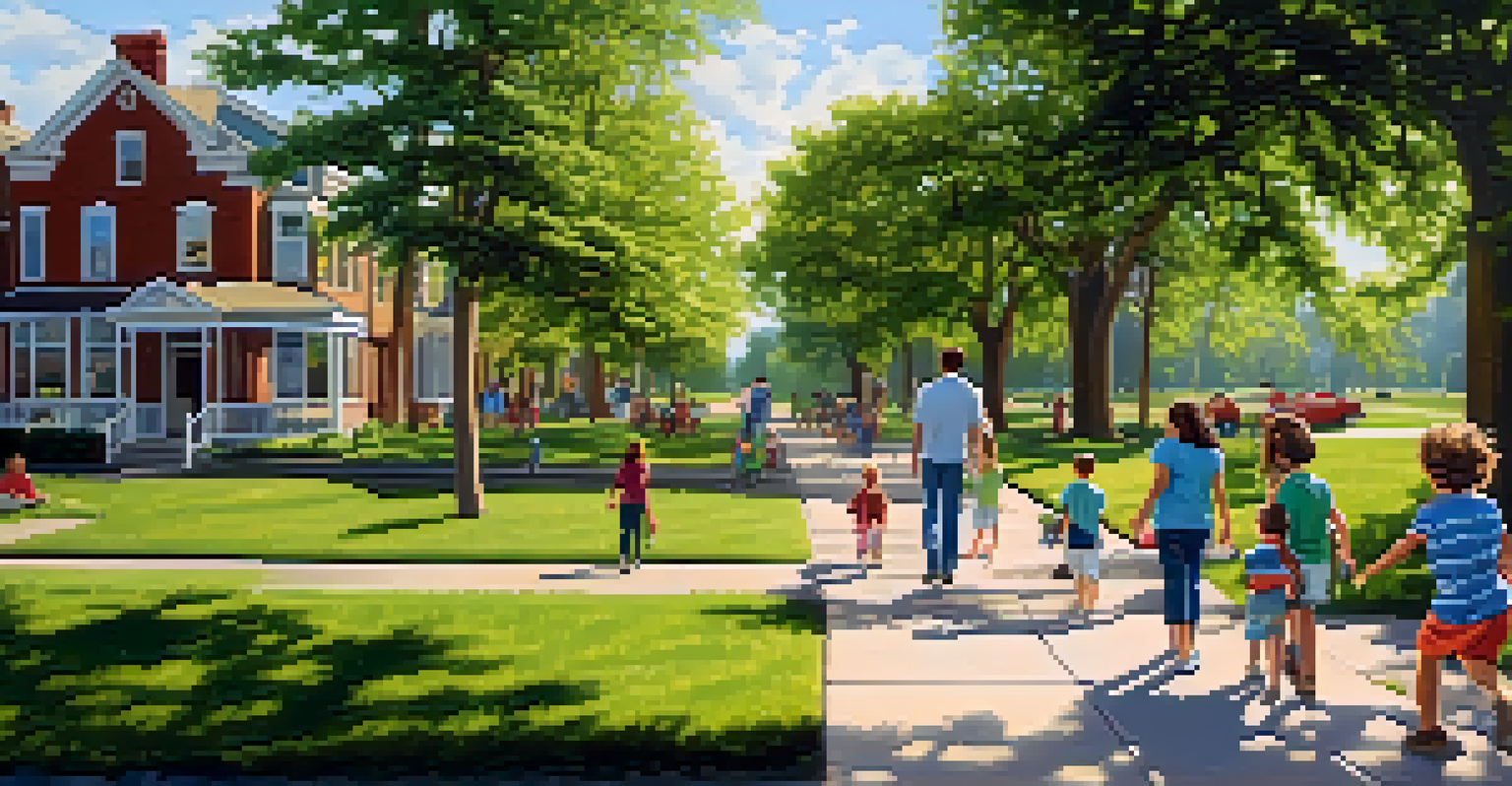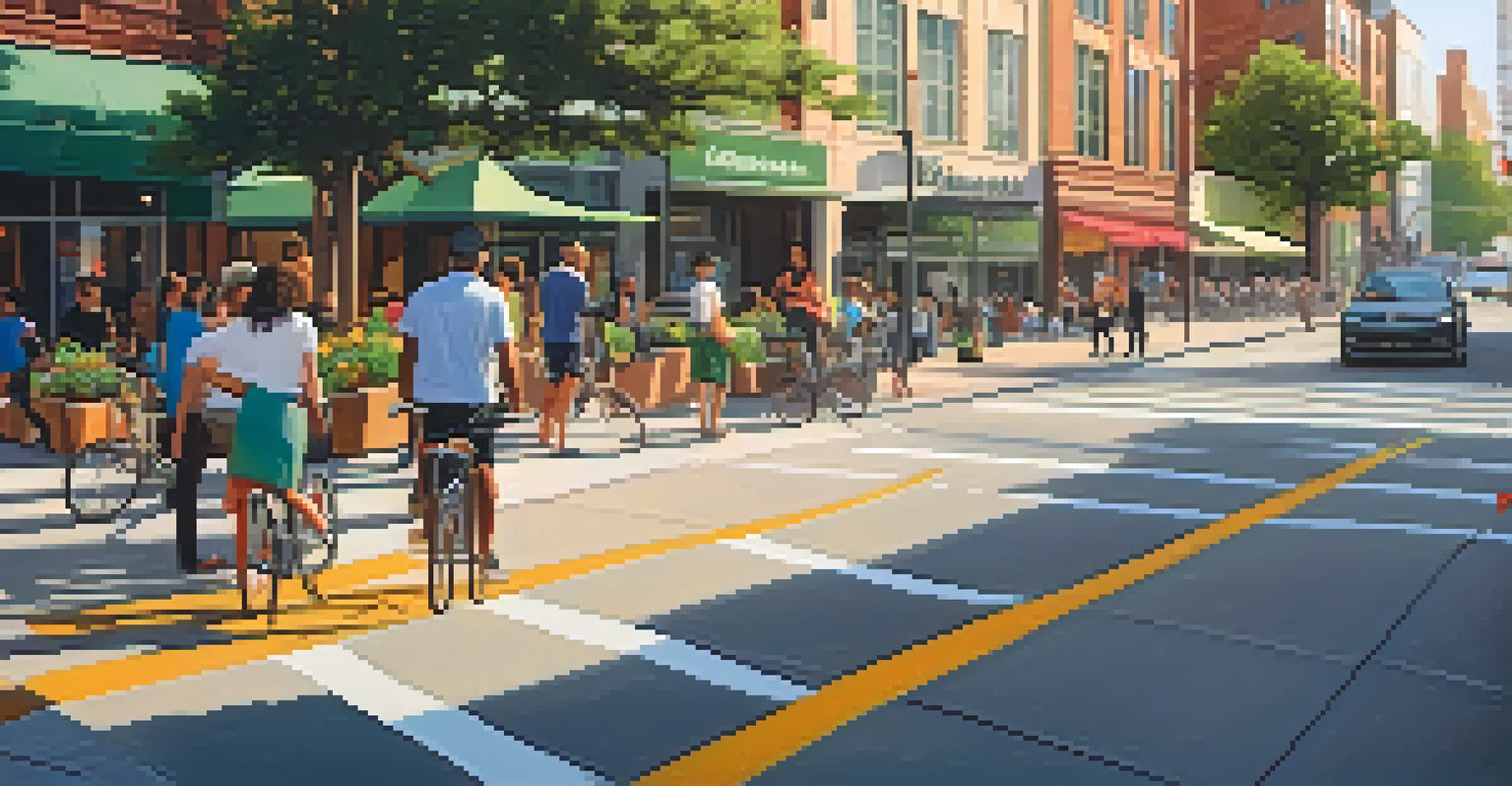Assessing the Benefits of Community Walkability Initiatives

Understanding Community Walkability: What It Means
Community walkability refers to how easy and pleasant it is for people to walk in a neighborhood. This encompasses various factors like pedestrian-friendly sidewalks, safe crossings, and accessible parks. When communities invest in walkability, they create environments that encourage walking, biking, and social interaction. Such initiatives not only promote healthier lifestyles but also foster a sense of community.
Walking is the best possible exercise. Habituate yourself to walk very far.
Imagine walking through a neighborhood where trees line the streets, shops are just a few steps away, and friendly faces greet you at every corner. This inviting atmosphere is the essence of walkability, transforming mundane errands into enjoyable outings. By prioritizing walkable spaces, communities can reduce reliance on cars and encourage more sustainable transportation methods.
Ultimately, walkability is more than just a convenience; it reflects a community's commitment to enhancing quality of life. With numerous benefits on the table, understanding walkability's importance is the first step toward making meaningful changes.
Health Benefits: Walking Keeps Us Fit and Happy
One of the most significant benefits of walkability is its positive impact on public health. When communities are designed for walking, residents are more likely to engage in physical activity, reducing the risk of obesity and related diseases. Regular walking not only builds physical endurance but also boosts mental well-being, reducing stress and anxiety levels.

Consider the difference between a neighborhood with limited sidewalks and one that encourages strolling. The latter invites families to take evening walks, engage with neighbors, and enjoy the outdoors, all of which contribute to stronger mental health. In fact, studies have shown that walkable areas often report lower rates of depression and other mental health issues.
Walkability Enhances Public Health
Designing communities for walking encourages physical activity, leading to improved mental and physical well-being.
Moreover, walkable neighborhoods can lead to improved air quality as more people choose walking over driving. With fewer vehicles on the road, pollution levels drop, resulting in healthier environments for everyone. Thus, investing in community walkability not only promotes individual health but also enhances the collective well-being.
Economic Impact: Boosting Local Businesses
Community walkability can significantly boost local economies. When neighborhoods are designed to be pedestrian-friendly, they attract foot traffic, which is crucial for local businesses. Shops, cafes, and markets benefit from increased visibility and accessibility, leading to higher sales and customer loyalty.
The best way to predict the future is to create it.
Picture a bustling street filled with people walking to their favorite coffee shop or boutique. This vibrant atmosphere not only supports existing businesses but also encourages new ventures to open up. Local entrepreneurs are more likely to invest in walkable areas, knowing that a steady stream of potential customers is just a few steps away.
Additionally, walkable communities can enhance property values, making them more desirable places to live. Homebuyers are often willing to pay a premium for homes in neighborhoods that promote walking, which further stimulates local economies. In this way, walkability creates a positive feedback loop, benefiting both residents and businesses alike.
Environmental Benefits: Reducing Our Carbon Footprint
Investing in walkability initiatives contributes to a healthier planet by reducing our carbon footprint. When more people walk instead of drive, there are fewer greenhouse gas emissions contributing to climate change. This shift not only helps the environment but also promotes sustainability in community planning.
Imagine a city where families can stroll to the grocery store or local park without relying on their cars. This reduction in vehicle use leads to less traffic congestion and improved air quality, creating cleaner and healthier living spaces. Communities that prioritize walkability are taking proactive steps toward environmental stewardship.
Boosting Local Economies
Walkable neighborhoods attract foot traffic, benefiting local businesses and increasing property values.
Moreover, walkable neighborhoods often incorporate green spaces and trees, which further enhance environmental benefits. These areas not only absorb carbon dioxide but also provide habitats for wildlife. By designing walkable communities, we can make meaningful strides in mitigating environmental challenges.
Social Connections: Building Stronger Communities
Walkability fosters social interaction, which is essential for building strong community ties. When residents feel comfortable walking in their neighborhoods, they are more likely to engage with their neighbors and participate in community activities. This sense of belonging can lead to a more cohesive and supportive environment.
Think about the difference between a neighborhood where everyone drives and one where people stroll and chat. In walkable areas, spontaneous interactions occur more frequently, creating opportunities for friendships to blossom. These connections are vital for community resilience, especially during challenging times.
Additionally, walkable neighborhoods often host social events, markets, and festivals that bring people together. These gatherings not only strengthen community bonds but also make living in these areas more enjoyable. Ultimately, walkability promotes a vibrant social fabric that enriches everyone's lives.
Safety Concerns: Addressing Walkability Challenges
While enhancing walkability presents numerous benefits, safety concerns can arise that need addressing. Poorly designed sidewalks, inadequate lighting, and high traffic volumes can deter people from walking. Communities must prioritize safety measures to ensure that walking is both enjoyable and secure for everyone.
Imagine a parent trying to walk their child to school in a neighborhood with busy streets and no crosswalks. This scenario highlights the critical need for safe pedestrian infrastructure. Solutions like well-marked crossings, pedestrian signals, and traffic calming measures can enhance safety and encourage more residents to walk.
Strengthening Community Bonds
When people walk more, they engage with their neighbors, fostering social connections and a sense of belonging.
Additionally, community involvement is crucial in identifying and addressing safety concerns. Engaging residents in discussions about their walking experiences can lead to valuable insights and improvements. By prioritizing safety, communities can create an environment where walkability thrives and everyone feels comfortable exploring their neighborhoods.
The Role of Policy: Supporting Walkability Initiatives
Policies play a pivotal role in promoting community walkability. Local governments can implement zoning laws and urban planning strategies that prioritize pedestrian-friendly designs. By creating frameworks that support walkable neighborhoods, policymakers can significantly influence how communities evolve.
Consider policies that require developers to include sidewalks, bike lanes, and green spaces in new projects. These regulations can shape the landscape of a community, ensuring that walkability becomes a fundamental aspect of future development. Moreover, funding for walkability initiatives can come from government grants aimed at enhancing public infrastructure.

Community advocacy is equally important; residents can voice their needs and desires to local leaders. By working together to promote walkability, communities can create lasting change that benefits everyone. Ultimately, effective policies can transform neighborhoods into vibrant, walkable spaces that enhance quality of life.